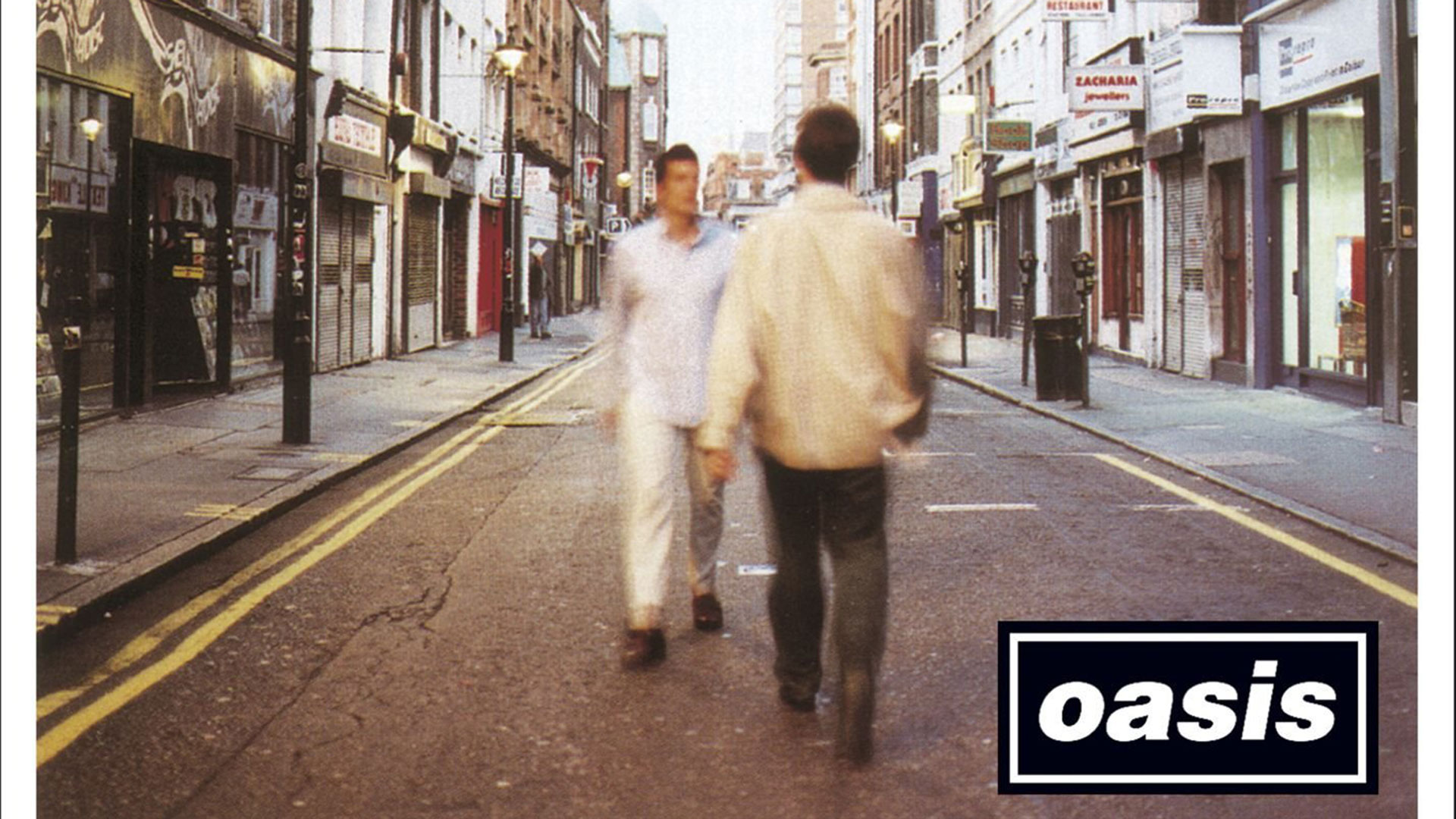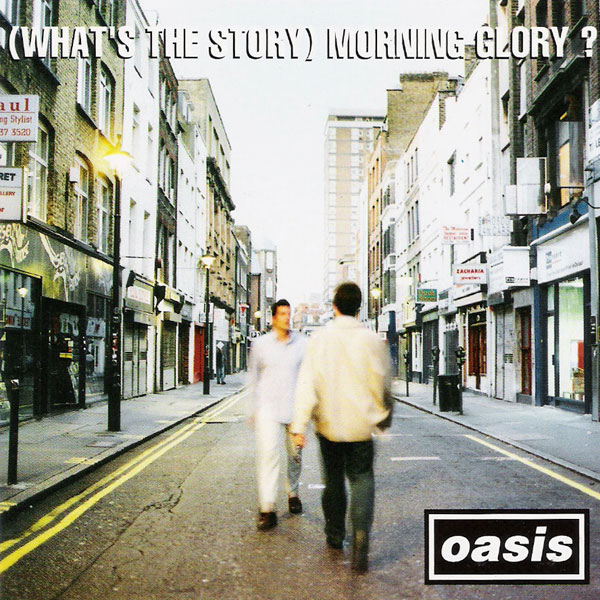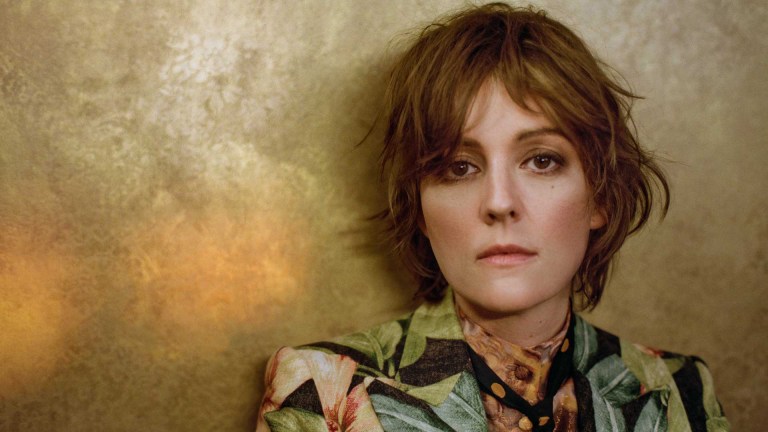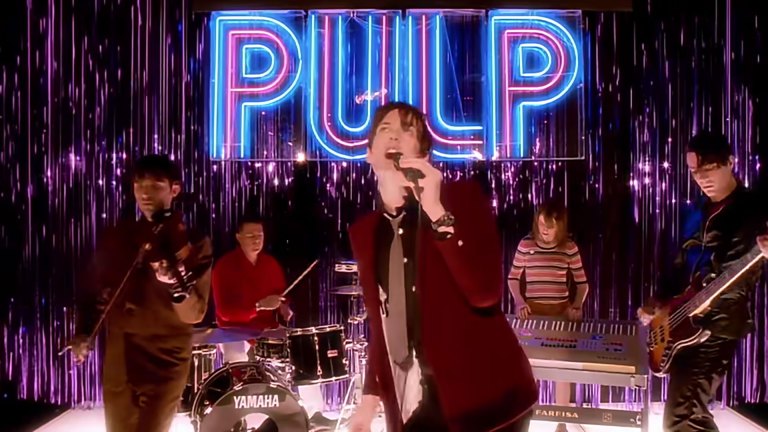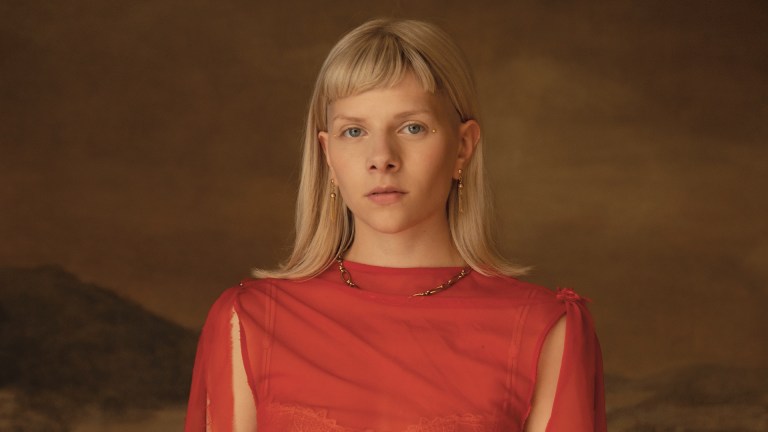The answer to the latter question is Berwick Street in London’s Soho (a popular location for record shops at the time). The answer to the former question is: neither of them. “It was supposed to be Liam and Noel,” Cannon reveals, “but they cried off, I think because they were pissed from the night before.”
In the end, as he set up to shoot around 5am (“If I’m not mistaken I’m pretty sure we stayed up straight through the night”), Cannon himself had to deputise as one of the figures in the photo – he’s the guy in the beige jacket on the right – alongside another survivor from the previous night’s drinking session, London DJ Sean Rowley (you can also spot album producer Owen Morris in the background, holding the record’s master tapes over his face).
“It’s mad that we chose Berwick Street, because it’s a busy street, bang in the middle of Soho,” Cannon reflects. “Even at 5 o’clock on a Sunday morning, when that was taken, you still expect the street to be full of traffic. I was quite prepared to have to digitally remove vehicles if need be. But weirdly that was how it appeared that morning – there was nothing in the street.
“And, even more remarkable – because it was all shot on film, it wasn’t done digitally, so you had no idea what you’d got until the next day and the results came back from the lab – the front cover was pretty much the first shot we got. We then proceeded to march around the streets for the next two hours taking more shots, blind to the fact that the first one we got was pretty much it. We could have just gone back to the pub.”
A fellow northern Englishman who grew up in Wigan, Cannon as you can probably tell had a close relationship with the Gallaghers – indeed, he and his graphic design company Microdot created pretty much all of Oasis’s record sleeves, logos and other art in the 1990s. The story of how he came to meet Noel Gallagher and become a trusted part of Oasis’s inner-circle at the dizzying peak of their career is an anecdote oh-so-typical of the band and the era, it’s worth recounting in full.
“For a couple of years when I started out, I was getting hardly any work at all,” Cannon begins. “But after a chance meeting with Richard Ashcroft at a party in Wigan, I got to work with The Verve. So that was my first break, and I had a few sleeves under my belt and a bit of a portfolio. Anyway, I took my mum to see the Vatican because she’s a Catholic and I love my mother very much and I knew she’d love it. So we went to Rome, a cheap-as-chips trip.
Advertising helps fund Big Issue’s mission to end poverty
“When I was in Rome, I bought this pair of Adidas trainers that you couldn’t get in Britain. Cut to the next scene, and I’m stood in a lift in Manchester, probably about 18 months later. This guy gets in, no idea who he is, never seen him in my life. First thing he said to me was, ‘Alright, where the f**k did you get them trainers from?’ And that’s how I met Noel Gallagher.
“So he said, ‘Right, what do you do then?’ And I said, ‘I design record sleeves’ and he said, ‘Really, what have you done?’ And I said The Verve, and he said, ‘No way, I like them, I seen them.’ So he says, ‘When we get signed’ – not if, mind – ‘you’re gonna design my sleeves.’ Then he got out of the lift and that was it. That’s a true story.”
Following What’s The Story, Cannon went on to design the sleeve for Oasis’s next album, 1997’s infamously over-hyped and overblown Be Here Now. It wasn’t only Oasis’s most expensive sleeve, but at a cost of £75,000, probably the most expensive record sleeve ever made, Cannon reckons.
“You can’t just turn up at a hotel and put a Rolls Royce in a swimming pool for nothing,” he jokes. “But seventy-five grand for an album sleeve! That’s outrageous.
“The mad thing about that sleeve is it looks photoshopped, because the Rolls Royce looks too small. In actual fact, that Rolls Royce really is in that pool – it took us two days to put it in. We could have photoshopped it, but it was the creative thing, that’s what turned me on. If you see some of the outtakes, it looks amazing, it looks serene, like it’s drowning.”
That Rolls Royce really is in that pool – it took us two days to put it in
Coming in at a mere £25,000, as Cannon recalls, What’s The Story seems like a snip by comparison. But even that was a huge sum relevant to the budgets bands have to spend on packaging for their records today, in the economically much tighter post-download era.
Advertising helps fund Big Issue’s mission to end poverty
“The reason most bands have shit artwork these days, is they haven’t got any money,” says Cannon. “It invariably is done by a mate who’s got a camera. Now, with the greatest respect in the world for mates who’ve got cameras, they’re not professional photographers, and it’s inevitable that they’re not gonna do a good job.”
With the golden era of record label sleeve art now very much passed, as Cannon sees it, he’s all the more glad to have been in the right place at the right time back in the early ’90s, and to have played his small part in Oasis becoming the biggest phenomenon in British music since The Beatles.
“I’m spectacularly proud of that body of work I did with that band,” Cannon reflects. “Because I know what it meant to so many people. Still to this day, I have people from all over the world saying, ‘Nice one Brian, because of this I became a graphic designer’ or ‘I became a photographer’.
“It’s a wonderful feeling. In a world that’s so full of s**t, it’s good to feel like you’ve done something people like and you know is good. That’s a wonderful thing. Things were just rocking at that moment. Everything in the universe just clicked and it was great.”
